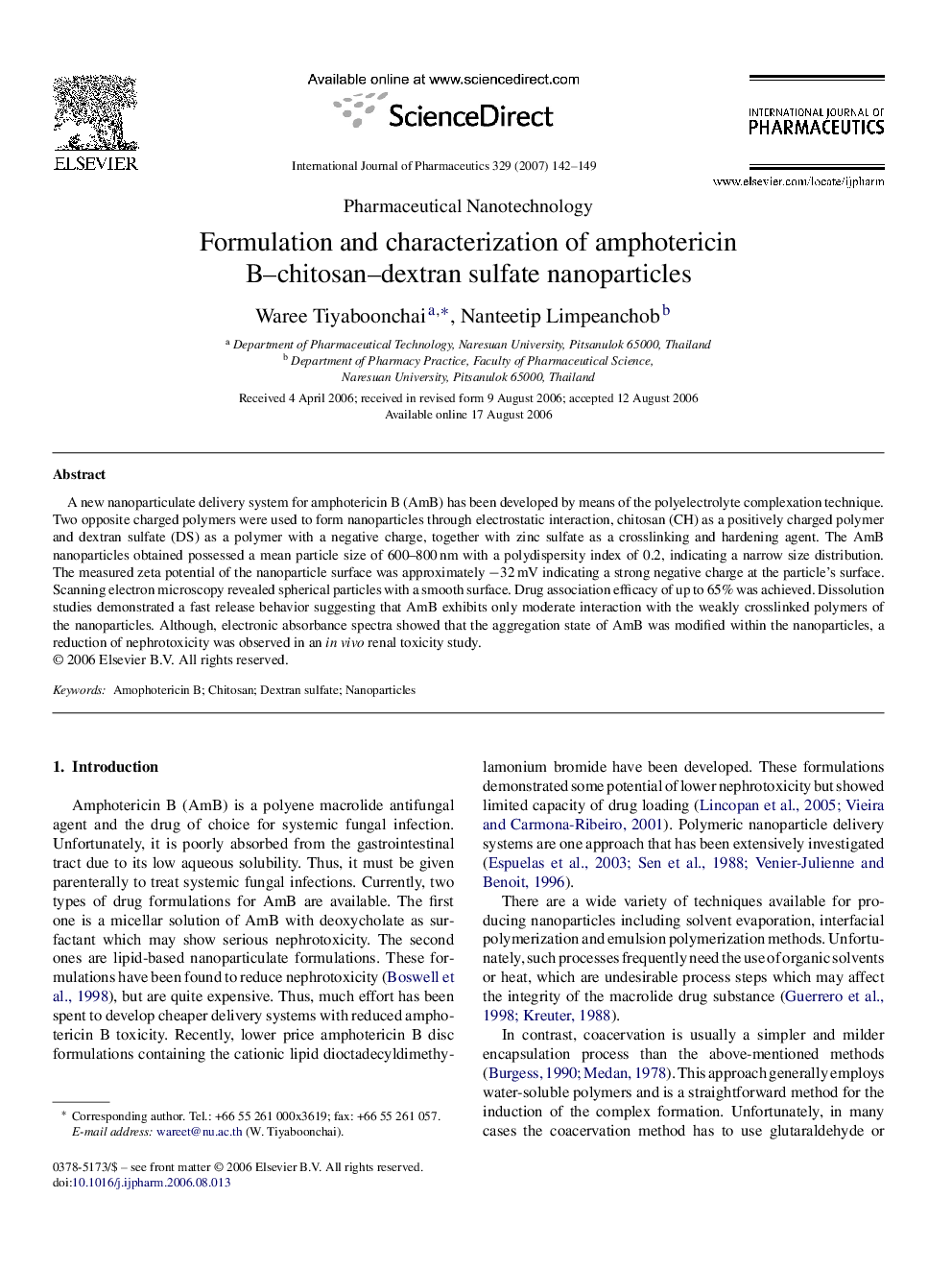| Article ID | Journal | Published Year | Pages | File Type |
|---|---|---|---|---|
| 2506532 | International Journal of Pharmaceutics | 2007 | 8 Pages |
A new nanoparticulate delivery system for amphotericin B (AmB) has been developed by means of the polyelectrolyte complexation technique. Two opposite charged polymers were used to form nanoparticles through electrostatic interaction, chitosan (CH) as a positively charged polymer and dextran sulfate (DS) as a polymer with a negative charge, together with zinc sulfate as a crosslinking and hardening agent. The AmB nanoparticles obtained possessed a mean particle size of 600–800 nm with a polydispersity index of 0.2, indicating a narrow size distribution. The measured zeta potential of the nanoparticle surface was approximately −32 mV indicating a strong negative charge at the particle's surface. Scanning electron microscopy revealed spherical particles with a smooth surface. Drug association efficacy of up to 65% was achieved. Dissolution studies demonstrated a fast release behavior suggesting that AmB exhibits only moderate interaction with the weakly crosslinked polymers of the nanoparticles. Although, electronic absorbance spectra showed that the aggregation state of AmB was modified within the nanoparticles, a reduction of nephrotoxicity was observed in an in vivo renal toxicity study.
